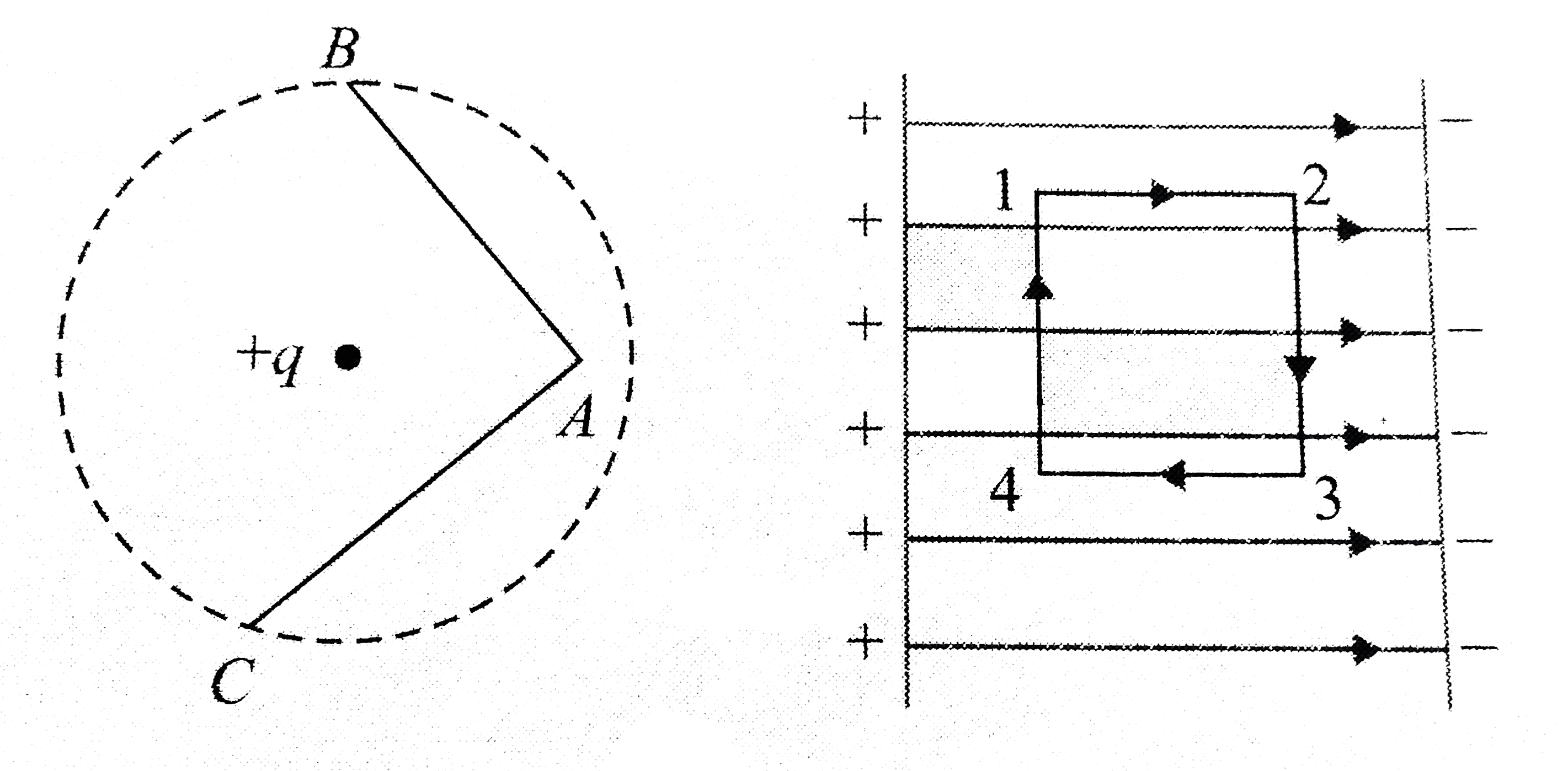What is the work done in moving a test charge q through a distance of 1 cm along the equatorial axis of an electric dipole ?
To solve the question of the work done in moving a test charge q through a distance of 1 cm along the equatorial axis of an electric dipole, we can follow these steps:
1. Understanding the Electric Dipole:
An electric dipole consists of two equal and opposite charges, +q and -q, separated by a distance 2d. The equatorial axis is the line that is perpendicular to the dipole axis and passes through the midpoint of the dipole.
2. Electric Potential on the Equatorial Axis:
The electric potential V at any point on the equatorial axis of an electric dipole is given by the formula:
V=0
This means that the potential is zero at all points along the equatorial axis.
3. Work Done Calculation:
The work done W in moving a charge q through a distance d in an electric field is given by the equation:
W=q⋅V
Since we have established that V=0 on the equatorial axis, we can substitute this into the work done equation:
W=q⋅0=0
4. Conclusion:
Therefore, the work done in moving the test charge q through a distance of 1 cm along the equatorial axis of the electric dipole is:
W=0
Final Answer:
The work done in moving the test charge q through a distance of 1 cm along the equatorial axis of an electric dipole is 0 Joules.
An electric dipole consists of two equal and opposite charges, +q and -q, separated by a distance 2d. The equatorial axis is the line that is perpendicular to the dipole axis and passes through the midpoint of the dipole.
The electric potential V at any point on the equatorial axis of an electric dipole is given by the formula:
V=0
This means that the potential is zero at all points along the equatorial axis.
The work done W in moving a charge q through a distance d in an electric field is given by the equation:
W=q⋅V
Since we have established that V=0 on the equatorial axis, we can substitute this into the work done equation:
W=q⋅0=0
Therefore, the work done in moving the test charge q through a distance of 1 cm along the equatorial axis of the electric dipole is:
W=0
The work done in moving the test charge q through a distance of 1 cm along the equatorial axis of an electric dipole is 0 Joules.
Topper's Solved these Questions
- BOOK - XII BOARD PREVIOUS YEAR PAPER ENGLISHCHAPTER - XII BOARDSEXERCISE - [SET - I]28videos
XII BOARDS
- BOOK - XII BOARD PREVIOUS YEAR PAPER ENGLISHCHAPTER - XII BOARDSEXERCISE - [SET - II DELHI BOARD]5videos
XII BOARDS
- BOOK - XII BOARD PREVIOUS YEAR PAPER ENGLISHCHAPTER - XII BOARDSEXERCISE - SET - III (Delhi Board)6videos
XII BOARDS
- BOOK - XII BOARD PREVIOUS YEAR PAPER ENGLISHCHAPTER - SAMPLE PAPER 2019EXERCISE - SECTION D6videos
SAMPLE PAPER 2019
Similar Questions
A body is subjected to a constant force given by
→F(N)=−ˆi+2ˆj+3ˆk
What is the work done by this force in moving the body through a distance of 4 m along the z=axis and then 3 m along the y-axis?View SolutionThere is an electric field E in x-direction. If the work done on moving a charge of 0.2C through a distance of 2 m along a line making an angle 60∘ with x-axis is 4 J, then what is the value of E?
View Solution
Knowledge Check
- Question 1 - Select One
The work done to move a unit charge along an equipotential from P to Q
Amust be defined as −Q∫P→E.→dlBis zeroCcan have a non-zero valueDboth (a) and (b)are correct
There is an electric field E in x-direction. If the work done on moving a charge of 0.2C through a distance of 2w m along a line making a angle 60∘ with x-axis is 4 J, then what is the value of E?
View SolutionThere is and electric field E in the +x direction. If the work done by the electric field in moving a charges 0.2C through a distance of 2m along a line making an angle of 60∘ with the x-axis is 1.0J, what is the value of E in NC−1?
View SolutionA bodys constrained to more in the Y-direction ,Is subject to a force →F=(−2ˆi+15ˆj+6ˆk) N What is the work done by force in moving the body through a distance of 10 m along the Y-axis ?
View SolutionThe work done to move a charge along an equipotential from A to B
View SolutionThe work done to move a charge along an equipotential from A to B
View Solutiona. A circle is drawn with center as a charge +q. What is the work done in moving a charge +q from B to C along the circumferebce of the circle ?
B In the above question, if the charge +q is first taken from B to A and then from A to C, on which path is the magnitude of work greater?
 View Solution
View SolutionThe work done in moving an electric charge q in an electric field does not depend upon
View Solution

